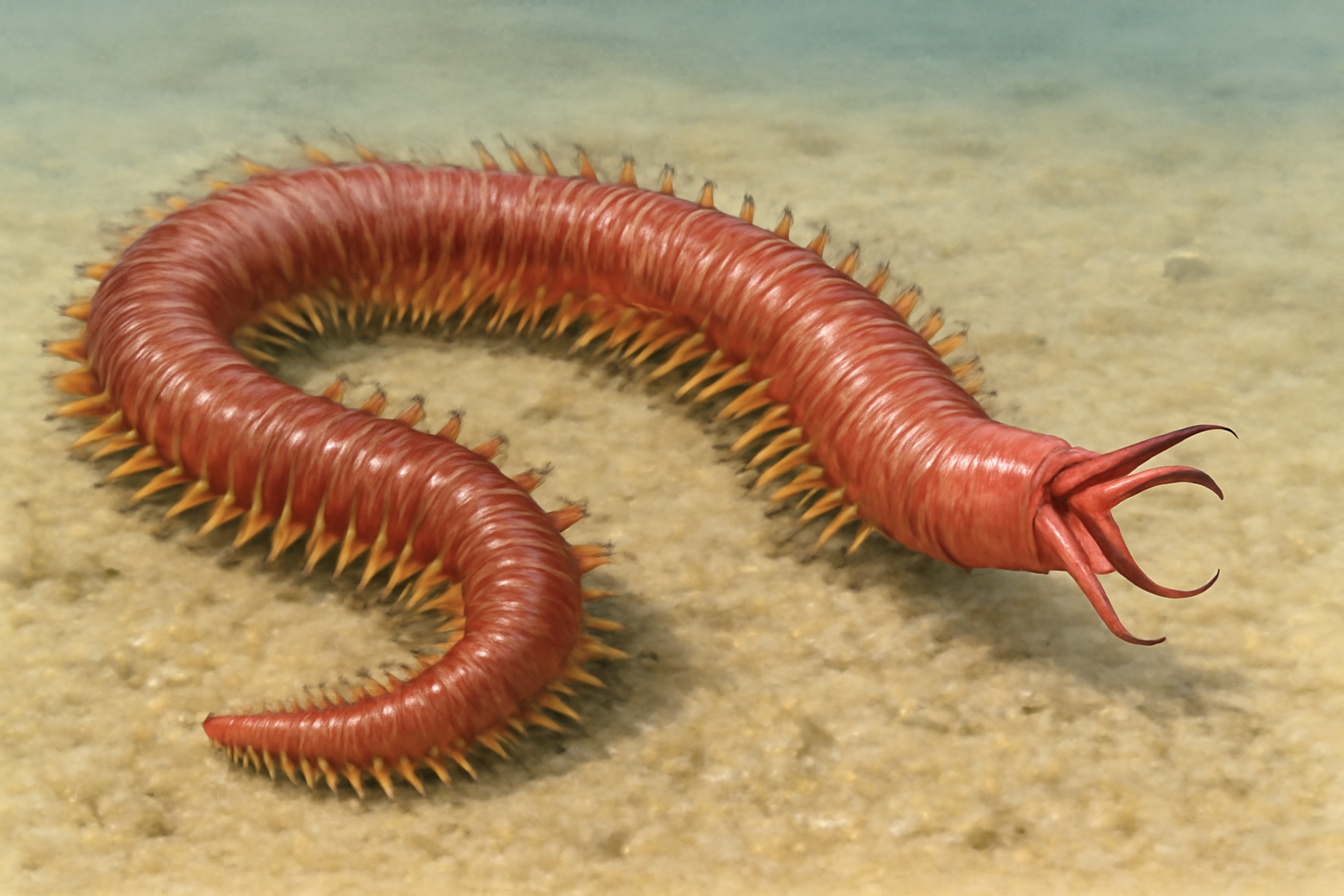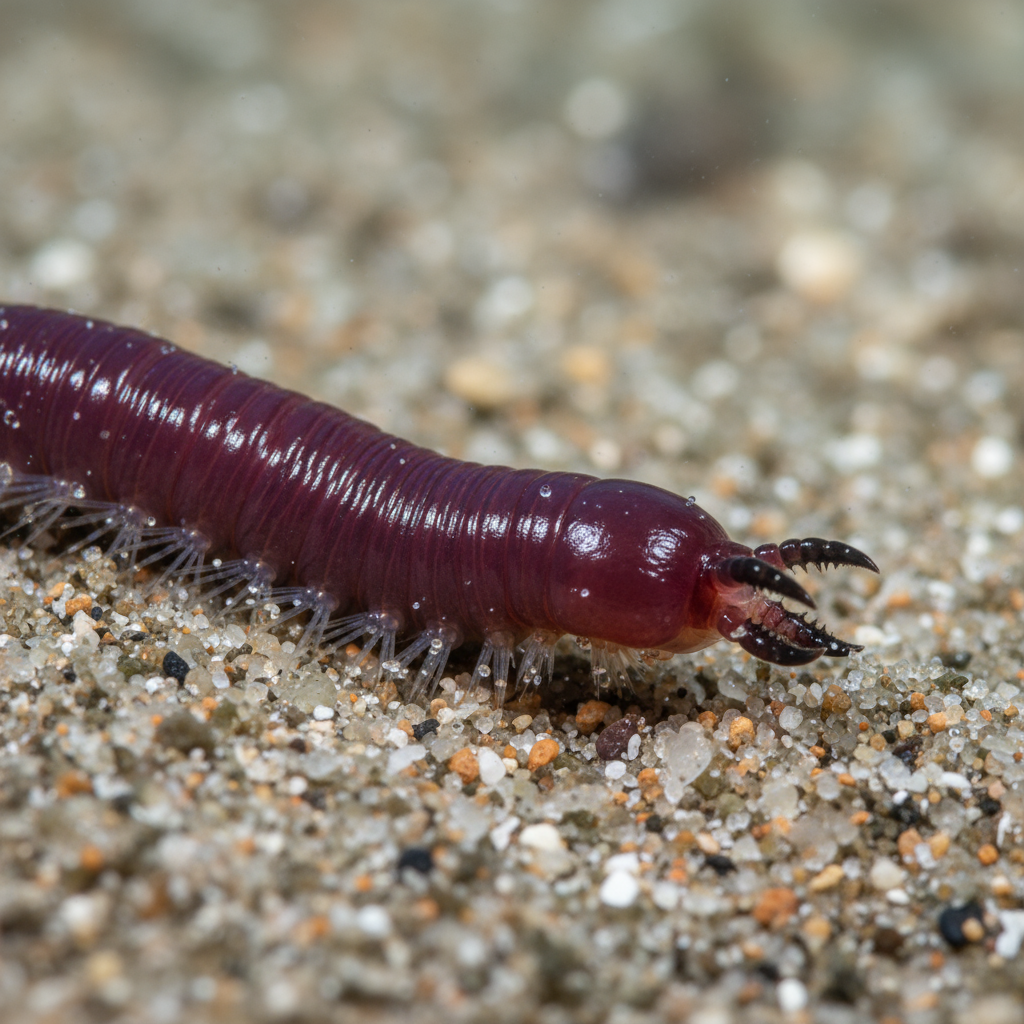Glycera: Morphology, Classification, Habitat, Behavior, and Ecological Role of the Bloodworm
Glycera is a genus of polychaete annelids commonly known as bloodworms due to their reddish color derived from hemoglobin-rich blood. These marine worms are notable for their carnivorous predatory habits, venomous jaws, and ecological significance in benthic marine ecosystems. Glycera species typically inhabit the soft sediments of shallow coastal waters but can also be found at greater depths. Their unique anatomical features, especially their jaw apparatus coupled with venom glands, and their life cycles make them fascinating subjects for scientific study.
Classification of Glycera
| Taxonomic Rank | Name | Characteristics |
|---|---|---|
| Kingdom | Animalia | Multicellular, motile organisms with specialized tissues |
| Phylum | Annelida | Segmented worms with true coelomic cavity |
| Class | Polychaeta | Marine bristle worms with parapodia bearing chaetae |
| Order | Phyllodocida | Polychaete worms with complex parapodia and eversible pharynx |
| Family | Glyceridae | Polychaetes with four strong jaws connected to venom glands |
| Genus | Glycera | Bloodworms with venomous jaws and hemoglobin-rich blood |

Habit and Habitat
Glycera species are benthic carnivores predominantly found in soft-bottom marine habitats such as sandy or muddy substrates in shallow coastal waters. Some species can inhabit depths exceeding 1000 meters. They are burrowers, constructing vertical or U-shaped tubes or burrows from sediment where they reside during the day and emerge at night to hunt. Their burrows also provide shelter from predators. Glycera use their proboscis to capture prey such as small fish, crustaceans, and other invertebrates.
Geographical Distribution
Bloodworms of these genus are cosmopolitan, with species widespread in temperate and tropical marine waters worldwide. They occur in the Atlantic, Pacific, Indian Oceans, and Mediterranean Sea. Some species have also been found in estuarine environments where salinity fluctuates. Their ability to survive in a wide range of sediment types and depths contributes to their broad distribution.
General Characteristics
- Glycera is commonly called as Smooth bloodworm.
- Body is elongated, cylindrical measuring 20 to 25 cm in length and adapted for burrowing life.
- Body is red coloured with small parapodia and an annulated prostomium. Animal makes cylindrical tunnels by its proboscis for dwelling.
- Prostomium is short, narrow and conical, having four small tentacles and two rudimentary palps.
- Due to burrowing life the parapodia are reduced in size bearing compound chaetae and special retractile gills.
- Blood vessels are absent, but the perivisceral fluid functions as circulatory fluid, having red corpuscles containing haemoglobin.
- Worm is quickly recognized by its long, tubular proboscis with 4 sharp teeth. Glycera is utilized as fish bait.
- Body Morphology: Long and cylindrical with multiple segments covered by tiny setae that aid in locomotion.
- Size: Most species range from 10 to 35 cm, with some giant species growing even longer.
- Coloration: Bright red due to a high concentration of hemoglobin in their blood, an adaptation for oxygen storage in low-oxygen sediments.
- Head and Jaw: The protrusible proboscis has four sclerotized jaws linked to venom glands capable of delivering toxic secretions.
- Venom Apparatus: Venom glands secrete neurotoxins and enzymes that immobilize prey and assist in digestion.
- Sensory Structures: Eyes and tactile organs allow detection of prey and environmental stimuli.
- Reproductive System: Typically separate sexes, with reproduction triggered by environmental cues such as temperature and lunar cycles.

Special Features
- Venomous Venom Glands: Unique among annelids, They possess venom glands associated with their jaws which deliver a painful, toxic bite to prey and predators alike.
- Hemoglobin-rich Blood: The red color is due to hemoglobin, allowing efficient oxygen transport in low-oxygen sediment environments.
- Burrowing Behavior: They can burrow rapidly using their muscular bodies and proboscis.
- Regenerative Capacity: Like many annelids, they can regenerate lost body parts.
- Ecological Role: They influence sediment structure, prey population dynamics, and are prey for larger marine animals.
- Larval Development: Eggs develop into planktonic larvae before settling to benthic juvenile and adult stages.
Identification
Glycera species are identified by:
- Presence of four jaws connected to venom glands in the extensible proboscis.
- Bright red coloration due to hemoglobin.
- Body segmentation with dense setae on parapodia.
- Size and shape of the prostomium and antennae.
- Morphological details of the distinct jaws and venom gland structure.
- DNA barcoding is increasingly employed to distinguish cryptic species.

Life Cycle and Reproduction
Reproduction is sexual, with separate male and female individuals releasing gametes synchronously into the water column. Spawning often occurs in response to environmental triggers like increased temperature and lunar phases, leading to epitokous transformation where adults produce swimming reproductive forms. Fertilized eggs develop into trochophore larvae, which undergo several planktonic stages before settling to the benthos to grow into juvenile worms. The lifecycle from egg to adult may vary from weeks to months depending on environmental conditions.
Ecological Role and Importance
- Sediment Aeration: Their burrowing increases oxygen penetration and sediment mixing.
- Trophic Interactions: They are both predators of smaller invertebrates and prey to fish and birds.
- Bioindicator Species: Their presence indicates sediment health and pollution status.
- Commercial Relevance: Bloodworms serve as bait in commercial and recreational fishing due to their bright coloration and activity.
- Scientific Value: Studies on Their venom contribute to toxinology and potential biomedical applications.
References
- Von Reumont BM et al., A Polychaete’s Powerful Punch: Venom Gland Transcriptomics of Glycera, PMC, 2014.
https://pmc.ncbi.nlm.nih.gov/articles/PMC4202326/ - Wikipedia – Glycera (annelid)
https://en.wikipedia.org/wiki/Glycera_(annelid)[2] - Scientific Reports on Glycera Toxicity
https://www.sciencedirect.com/science/article/pii/S2590171022000261 - Marine Species Database – Glycera alba Habitat and Morphology
http://www.marinespecies.org/aphia.php?p=taxdetails&id=130116
